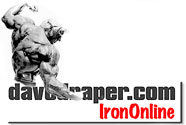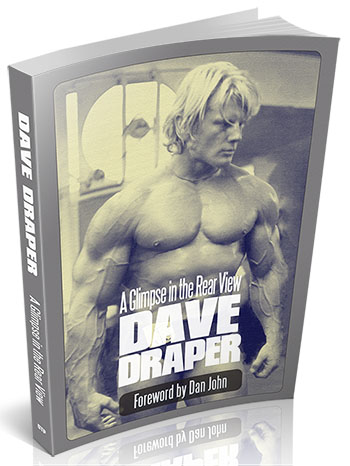Steve Wedan's Full Body HIT Workout # 2&3
IronOnline Total Body Workouts
Howdy, all. Laree graciously allowed me to outline a two-week schedule of HIT, so here's what you get for the second and third weeks of April.
One note at the outset: I've been doing more thinking about the startling success I experienced with the limited exposure I had to static contraction training, and in the interest of full disclosure, I'll admit I'm moving more in that direction. For now, though, I'll give you what I've been using to make good, solid gains.
Another note: The cardinal rule in progressive resistance exercise is progression. That seems obvious, but how many of us forget it in the pursuit of that great pump or jumping too frequently between routines? I know I've been guilty of one or the other at various times. I urge you to focus on your "numbers," those indications in your training journal that spell out progression. All right, here goes.
Week One
A: Squat
Toe Press (leg press machine)
Barbell Press
HS (Hammer Strength) Curl
HS Pullover
Wrist Curl
B: Calf
Raise
Ab Crunch
HS Row Machine
Dip
Incline Row
Wrist Curl
Week Two
A: DB
Squat, Controlled Intervals (ie, HIIT) Static Contractions -
Calf Raise
Leg Extension
Leg Curl
Dip
Long Pulley Row
HS Press
B: (Repeat Week One, 'A')
Okay, let's look at this. For most of the exercises, the set/rep protocol is as follows:
Set
1: 6 reps, Continuous Tension (CT), 50%
Set 2: 6 reps, Compensatory Acceleration
Training (CAT), 75%
Set 3: 4-6 reps, CAT, 100%
Set 4: 4-6 reps, CAT, 100%
Set 5: 8-12 reps, CT 50%
Set 6: 8-12 reps, CT, 50%
These are the reps that do it for me. You might change them, based on good success with other numbers, but if you've been stuck, give these a good try.
CAT is what Fred Hatfield calls the sort of rep performance that power people and a lot of bodybuilders use. After a controlled descent, you *DRIVE* the bar up, trying to accelerate it, making sure not to lose control at the end of the rep. It's a way of flattening the strength curve of a linear movement, albeit an inexact one.
Continuous Tension is done by flexing through the movement, as though posing the involved bodypart. Resistance is provided by the muscle on the opposite side of the joint -- as much as or more than the bar. You create so much intramuscular tension that the weight is not really consequential. It is very much a mental technique, but it yields a WILD pump. You move through the rep slowly and smoothly, maintaining the tension. Doing this after you've done reps power-style is a good way to achieve an extreme, high-quality pump. I say "high quality," because as we all know, you can get a pump without having done anything in the way of giving your muscles heavy work.
A technique useful for enhancing this CT protocol is to use padded lifting gloves or folded hand towels as padding for your hands. With these in place, concentrate on *squeezing* the bar before you start the repetition's stroke. Let the tension build up all through your arms and even into your torso. Then, maintaining that tension and focusing on moving as though posing, start moving slowly and smoothly. Like a hydraulic machine. Al Beckles was one of the truly great bodybuilders with an extraordinarily long competitive career. He used sponges in his hands, the big, thick, oval kind, performing this technique.
Keep your rest between sets at 2 or 3 sets -- or whatever allows you to sufficiently recover -- until after Set #4. Then, take no longer than a minute, if you can drop the poundage on the bar in that time. "Race the pump" for the final two sets. I go for 45 seconds rest before those last two sets.
The first CT set is simply a warmup, as is the first CAT set. The last two sets compliment the heavy two in the middle. When you begin to cease making poundage gains over time, drop one of the two final sets. If necessary, drop one of the two middle sets, too.
This
six-set protocol goes for everything except the following:
Toe Press 3 x 12-20
Wrist Curl 3 x 12-20
Ab Crunch 3 x 10
DB Squat 8 x 6 (@ 20 seconds lifting, 10 seconds rest: HIIT)
Again, the rep numbers on calves, forearms, and abs are what work for me. If you have evidence other numbers work for you, do them.
Put some heavy, concentrated work into this, and see if your body likes it. Realize that, if you are overtraining (always a possibility), taking a week off before getting back into training can propel you toward the progress you want. If your numbers (reps and poundage) aren't increasing, give it some serious thought.
Your
IOL brother,
Steve Wedan
Click here to go back to the sample total body workout page
Click here to read Steve's HIT Primer
Here's Steve's article on Arthur Jones and Casey Viator
Steve's an artist, and has done a terrific print of Dave, which you'll find here
Click here to talk training with Steve in our online forum

